PhySens Rail
Innovative Sensor Technologies & Data Analysis in the Railway Industry
PhySens Rail combines cutting-edge measurement technology with modern data analysis concepts for rail applications. Originating from scientific space research, we develop durable, robust sensors to ensure safe and reliable train operations of the future.

Infrastructure
IoT sensors for monitoring switches and railroad crossings, as well as for train detection.
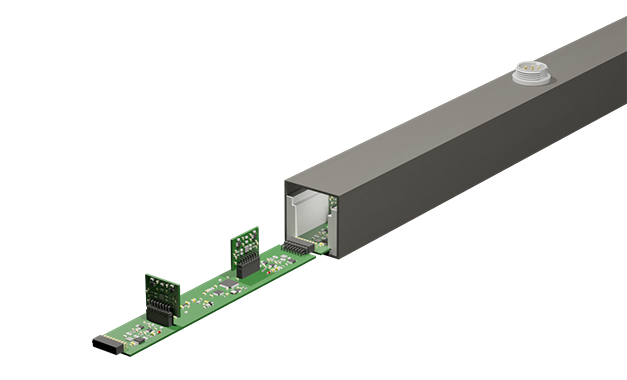
Odometry
Passive, contactless magnetic-field based velocity measurement for rail vehicles.
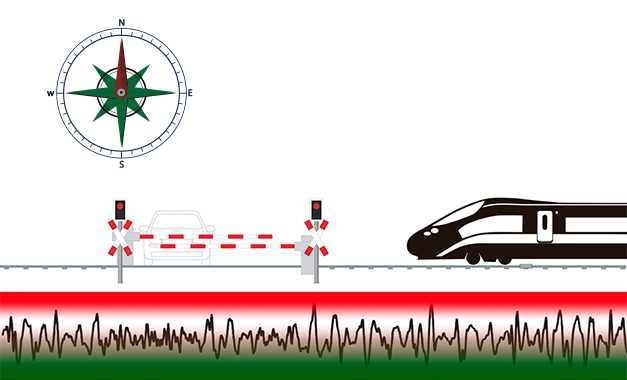
Localization
Accurate, continuous and safe localization of rail vehicles using magnetic field measurements.
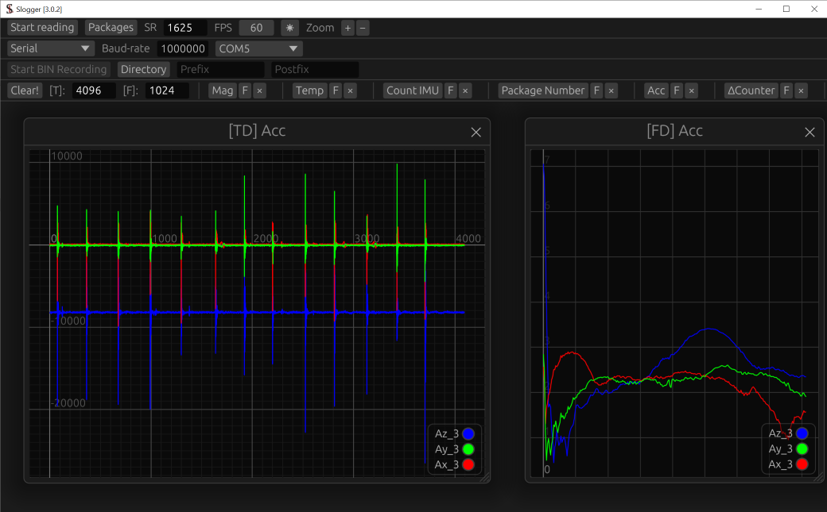
Additional Services
Railway-specific measurement technology, software solutions and consulting services.

Infrastructure
IoT sensors for monitoring switches and railroad crossings, as well as for train detection.

Odometry
Passive, contactless magnetic-field based velocity measurement for rail vehicles.

Localization
Accurate, continuous and safe localization of rail vehicles using magnetic field measurements.

Additional Services
Railway-specific measurement technology, software solutions and consulting services.
Infrastructure
Railway Infrastructure Monitoring
Numerous technology-related delays in rail traffic can be attributed to defects in the railway infrastructure. Notably, issues with switches account for approximately 20% of infrastructure-related delays. Therefore, improvements in monitoring and maintenance are crucial aspects to optimize the railway network for future needs. Existing infrastructure monitoring systems, such as those using acceleration or current sensors, rely on indirect measurement techniques and hence are unable to provide direct information, e.g. about the position of a switch blade. Mechanical end position detectors only provide binary information and furthermore, are subject to degradation, weather, and other environmental influences
PhySens Technology
The PhySens technology consists of a comprehensive sensor system designed to monitor the condition of railway infrastructure, including switches and railroad crossings. At the same time, it allows the detection of train crossings, functioning as an intelligent axle counter. The implementation of IoT sensors and cloud-based data analysis enables a real-time, large-scale overview of the current state of the infrastructure. Our contactless measurement approach takes advantage of the fact that the movement of components or the passing of a train generates a characteristic magnetic signature, which can, for example, be used to determine the current position of the respective components. This allows an early detection and prevention of potential disruptions, such as icing of switches or vehicles on railroad crossings. Our solution can be seamlessly integrated into existing system diagnostics and used as a supportive tool.
- Smart axle counter
- Detection of switch blade positions and icing
- Detection of vehicles on railroad crossings
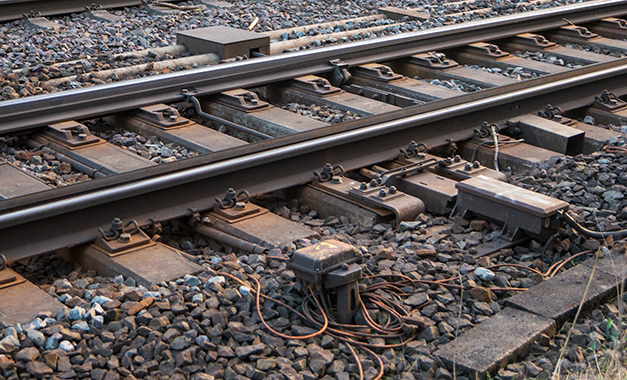
Infrastructure
Railway Infrastructure Monitoring
Numerous technology-related delays in rail traffic can be attributed to defects in the railway infrastructure. Notably, issues with switches account for approximately 20% of infrastructure-related delays. Therefore, improvements in monitoring and maintenance are crucial aspects to optimize the railway network for future needs. Existing infrastructure monitoring systems, such as those using acceleration or current sensors, rely on indirect measurement techniques and hence are unable to provide direct information, e.g. about the position of a switch blade. Mechanical end position detectors only provide binary information and furthermore, are subject to degradation, weather, and other environmental influences
PhySens Technology
The PhySens technology consists of a comprehensive sensor system designed to monitor the condition of railway infrastructure, including switches and railroad crossings. At the same time, it allows the detection of train crossings, functioning as an intelligent axle counter. The implementation of IoT sensors and cloud-based data analysis enables a real-time, large-scale overview of the current state of the infrastructure. Our contactless measurement approach takes advantage of the fact that the movement of components or the passing of a train generates a characteristic magnetic signature, which can, for example, be used to determine the current position of the respective components. This allows an early detection and prevention of potential disruptions, such as icing of switches or vehicles on railroad crossings. Our solution can be seamlessly integrated into existing system diagnostics and used as a supportive tool.
Odometry
Odometry in Railway Traffic
Precise knowledge of the position and velocity of rail vehicles is essential for safe train operation. With increasing route utilisation, higher speeds and especially in connection with ATO (Automatic Train Operation), accuracy requirements in train protection systems become increasingly important. Given the growing demands for energy efficiency and the availability of future mobility solutions, existing infrastructure needs to be better utilized. However, this is hardly possible with existing sensor technology, where the impact of weather, slippage and GPS visibility leads to limited availability, making it impossible to determine speed and position with the required accuracy. Consequently, maximum speeds cannot be achieved, and track clearance signals are received with delays, which can ultimately result in train delays and cancellations. The available capacity of the railway network cannot be utilised to the fullest extent, either.
Magnetic Odometry
Magnetic odometry represents a novel, innovative approach for the highly available and safe determination of the velocity of rail vehicles. The method relies on the magnetic properties of the superstructure and substructure, the operation is based on a completely passive and contactless measurement technique and occurs without any interference effects. Two magnetometers, spatially separated along the direction of travel, measure the magnetic signature of the track. Knowing the distance between the magnetometers, the speed can be determined from the time shift between the recorded signatures. Contrary to established methods, such as wheel impulse generators and radars, magnetic odometry remains independent of weather conditions. Even slippage and skidding effects of the wheels, as well as variations in the wheel circumference, do not affect the sensor. Additionally, it can detect the passage of different infrastructure elements, such as switches, bridges, and railroad crossings. Due to the passive measurement technique, the sensor system is particularly robust, retrofittable, and characterised by an exceptionally long lifetime.

Odometry
Odometry in Railway Traffic
Precise knowledge of the position and velocity of rail vehicles is essential for safe train operation. With increasing route utilisation, higher speeds and especially in connection with ATO (Automatic Train Operation), accuracy requirements in train protection systems become increasingly important. Given the growing demands for energy efficiency and the availability of future mobility solutions, existing infrastructure needs to be better utilized. However, this is hardly possible with existing sensor technology, where the impact of weather, slippage and GPS visibility leads to limited availability, making it impossible to determine speed and position with the required accuracy. Consequently, maximum speeds cannot be achieved, and track clearance signals are received with delays, which can ultimately result in train delays and cancellations. The available capacity of the railway network cannot be utilised to the fullest extent, either.
Magnetic Odometry
Magnetic odometry represents a novel, innovative approach for the highly available and safe determination of the velocity of rail vehicles. The method relies on the magnetic properties of the superstructure and substructure, the operation is based on a completely passive and contactless measurement technique and occurs without any interference effects. Two magnetometers, spatially separated along the direction of travel, measure the magnetic signature of the track. Knowing the distance between the magnetometers, the speed can be determined from the time shift between the recorded signatures. Contrary to established methods, such as wheel impulse generators and radars, magnetic odometry remains independent of weather conditions. Even slippage and skidding effects of the wheels, as well as variations in the wheel circumference, do not affect the sensor. Additionally, it can detect the passage of different infrastructure elements, such as switches, bridges, and railroad crossings. Due to the passive measurement technique, the sensor system is particularly robust, retrofittable, and characterised by an exceptionally long lifetime.
Localisation
In addition to precise speed determination, highly accurate localisation is essential to prevent collisions while still achieving high route utilisation, particularly without fixed block sections. Current systems insufficiently fulfil these requirements as for example, optical systems are disrupted by weather and environmental influences, while satellite navigation fails in railway stations or tunnels. A possible alternative involves determining the position based on the magnetic subsurface profile of the track, utilizing magnetic field sensors that are mounted on the vehicle. However, there is a current lack of long-term analyses to evaluate the reliability, accuracy, and availability of such a method.
In collaboration with the University of Hamburg (Department of Mathematics), PhySens Rail GmbH is conducting the joint project “MZLS – Localisation of trains using a magnetic map of the railway network” (in German: “Lokalisierung von Zügen anhand einer magnetischen Karte des Schienennetzes”). The aim of this project is to create magnetic maps for various test sections of the German railway network, with the primary objective of evaluating the accuracy and reliability of magnetic localisation.
The project is funded by the German Federal Ministry of Digital and Transport (in German: Bundesministerium für Digitales und Verkehr) as part of the mFUND innovation initiative under the funding code 19F1128A/B, with a total support of approximately 80,000 euros. Additional information on the project can be found here.
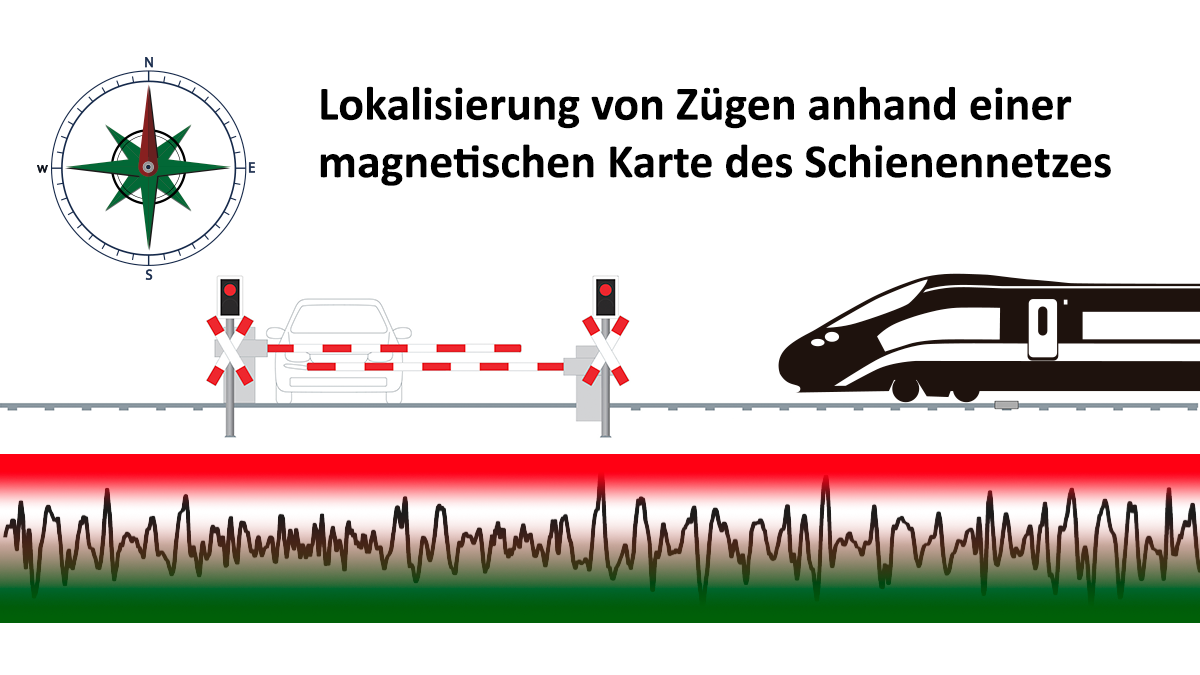
Localisation
In addition to precise speed determination, highly accurate localisation is essential to prevent collisions while still achieving high route utilisation, particularly without fixed block sections. Current systems insufficiently fulfil these requirements as for example, optical systems are disrupted by weather and environmental influences, while satellite navigation fails in railway stations or tunnels. A possible alternative involves determining the position based on the magnetic subsurface profile of the track, utilizing magnetic field sensors that are mounted on the vehicle. However, there is a current lack of long-term analyses to evaluate the reliability, accuracy, and availability of such a method.
In collaboration with the University of Hamburg (Department of Mathematics), PhySens Rail GmbH is conducting the joint project “MZLS – Localisation of trains using a magnetic map of the railway network” (in German: “Lokalisierung von Zügen anhand einer magnetischen Karte des Schienennetzes”). The aim of this project is to create magnetic maps for various test sections of the German railway network, with the primary objective of evaluating the accuracy and reliability of magnetic localisation.
The project is funded by the German Federal Ministry of Digital and Transport (in German: Bundesministerium für Digitales und Verkehr) as part of the mFUND innovation initiative under the funding code 19F1128A/B, with a total support of approximately 80,000 euros. Additional information on the project can be found here.
Additional Services
RAILWAY-SPECIFIC MEASURMENT TECHNOLOGY, SOFTWARE SOLUTIONS AND CONSULTING SERVICES
We develop customised solutions ranging from sensors to apps for various railway applications and are highly familiar with the technical and operational framework conditions within the railway industry. Our portfolio covers every stage from conception, through hardware/software development and implementation to commissioning, data acquisition and evaluation.
As part of the PhySens Group, our primary focus lies in intelligent sensor systems, e.g. for energy, vibration or magnetic field measurements, along with data analysis and visualisation.

Additional Services
RAILWAY-SPECIFIC MEASURMENT TECHNOLOGY, SOFTWARE SOLUTIONS AND CONSULTING SERVICES
We develop customised solutions ranging from sensors to apps for various railway applications and are highly familiar with the technical and operational framework conditions within the railway industry. Our portfolio covers every stage from conception, through hardware/software development and implementation to commissioning, data acquisition and evaluation.
As part of the PhySens Group, our primary focus lies in intelligent sensor systems, e.g. for energy, vibration or magnetic field measurements, along with data analysis and visualisation.
